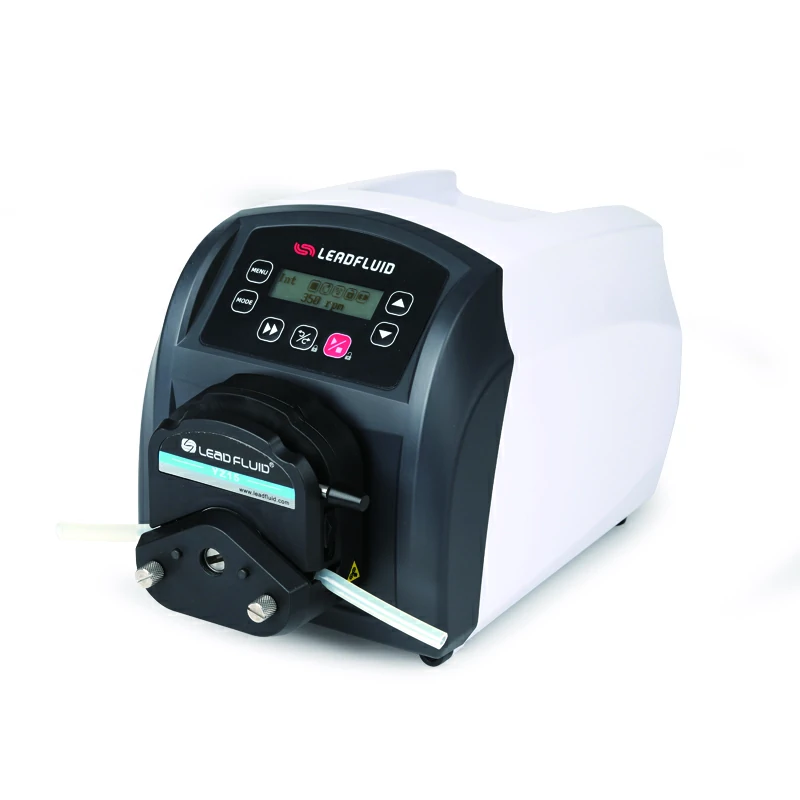Here are the general steps for administering drugs with peristaltic pumps:
- Select the appropriate peristaltic pump: Choose a peristaltic pump that suits your specific dosing requirements, considering factors such as flow rate, accuracy, and compatibility with the liquid being dosed.
- Prepare the pump and tubing: Ensure that the pump is clean and properly set up according to the manufacturer’s instructions. Select a flexible tube made of materials compatible with the liquid being dosed. Cut the tube to the desired length, ensuring it fits securely in the pump head or rotor assembly.
- Prime the pump: Depending on the specific pump model, you may need to prime the pump before use. Priming involves filling the tubing with the liquid to remove any air bubbles and ensure proper flow. Follow the manufacturer’s instructions for priming the pump.
- Set the desired dosage: Determine the desired dosage or flow rate for your application. This can be done by adjusting the speed of the motor or the rotational speed of the rollers or shoes. Consult the pump’s user manual for instructions on adjusting the dosage settings.
- Start the pump: Once the pump is primed and the dosage settings are configured, start the pump by turning on the power supply. The rollers or shoes will begin to rotate, creating the squeezing action and initiating the dosing process.
- Monitor the dosing process: Observe the dosing process to ensure that the pump is operating smoothly and delivering the desired dosage. Check for any signs of leakage, irregular flow, or other issues. Adjust the dosage settings if necessary.
- Stop the pump: When the dosing process is complete or when you need to pause or stop the pump, turn off the power supply to stop the rotation of the rollers or shoes. This will halt the dosing action and prevent further liquid flow.
- Maintenance and cleaning: After each use, follow the manufacturer’s instructions for cleaning and maintenance. This may involve flushing the tubing with a suitable cleaning solution, removing any residue, and ensuring proper storage of the pump.
It’s important to note that the specific steps may vary depending on the model dosing peristaltic pump and manufacturer of the peristaltic pump. Always refer to the user manual provided by the manufacturer for detailed instructions and guidelines specific to your pump model.
Where is peristaltic pump dosing usually used ?
Peristaltic pump dosing is commonly used in various industries and applications that require accurate and controlled delivery of fluids. Some of the typical areas where peristaltic pump dosing is utilized include:
- Pharmaceutical and Biotechnology: Peristaltic pumps are often employed in pharmaceutical and biotech applications for precise dosing of drugs, chemicals, and reagents. They are used in processes such as drug formulation, sample preparation, cell culture, and bioreactor feeding.
- Laboratory and Research: Peristaltic pumps find extensive use in laboratory settings for dosing chemicals, media, and solutions in experiments, analytical procedures, and sample analysis. They offer accurate and repeatable dosing, making them suitable for a wide range of scientific research applications.
- Food and Beverage: Peristaltic pumps are employed in the food and beverage industry for dosing ingredients, flavorings, additives, and colorants. Their hygienic design and gentle pumping action make them ideal for handling sensitive food products without contamination or alteration.
- Water Treatment: Peristaltic pumps are used in water treatment processes for dosing chemicals, disinfectants, pH adjusters, and coagulants. They provide precise control over the dosing rate, ensuring effective and efficient water treatment.
- Environmental Monitoring: Peristaltic pumps are utilized in environmental monitoring applications for dosing reagents, standards, and calibration solutions in water quality analysis, air pollution monitoring, and soil analysis. Their accuracy and reliability play a crucial role in obtaining accurate measurement results.
- Industrial Processes: Peristaltic pumps are employed in various industrial processes that require controlled dosing, such as chemical dosing in manufacturing, lubricant dosing in machinery, and additive dosing in fuel blending.
- Medical and Healthcare: Peristaltic pumps are used in medical equipment and healthcare applications for dosing medications, nutritional solutions, and fluids in clinical settings, patient care, and research.
- Cosmetics and Personal Care: Peristaltic pumps find applications in the cosmetics and personal care industry for dosing ingredients and formulations, such as lotions, creams, gels, and fragrances. They allow precise control over the dosage, ensuring consistent product quality.
These are just a few examples of the many areas where peristaltic pump dosing is utilized. The versatility, accuracy, and reliability of peristaltic pumps make them suitable for a wide range of industries and applications that require precise fluid dosing.

